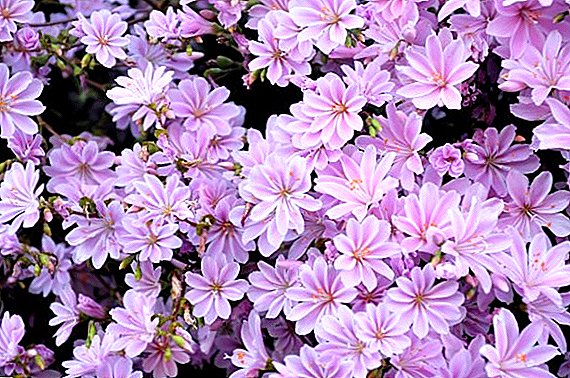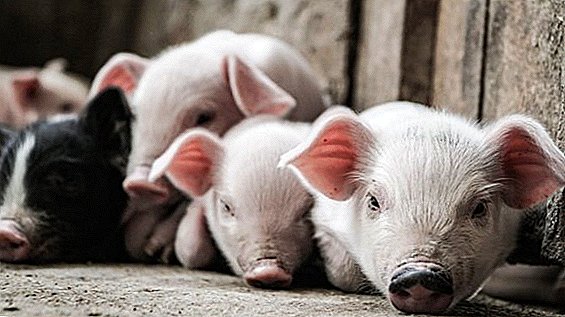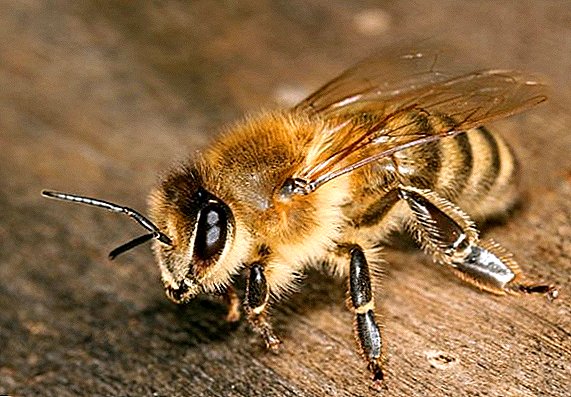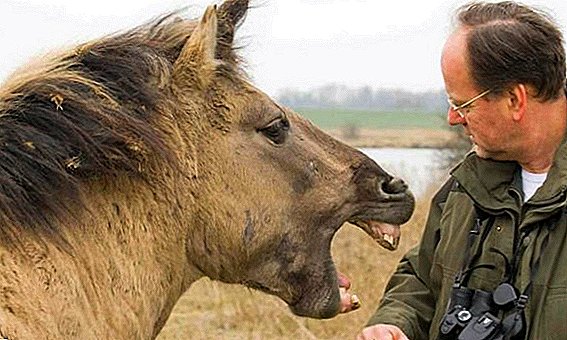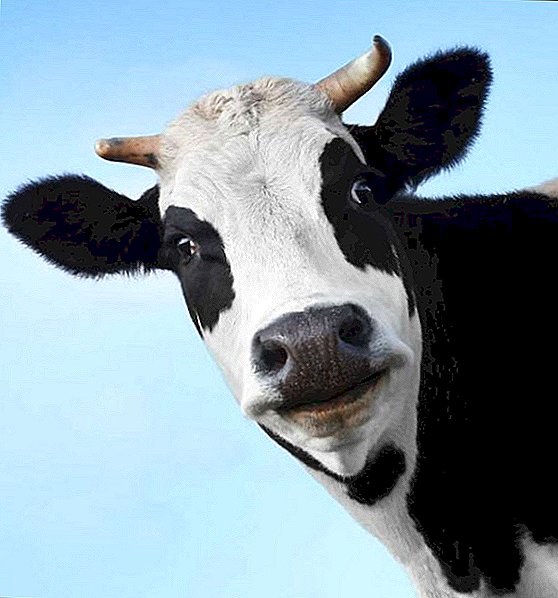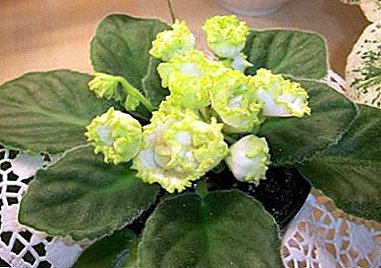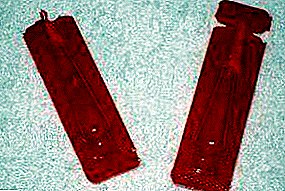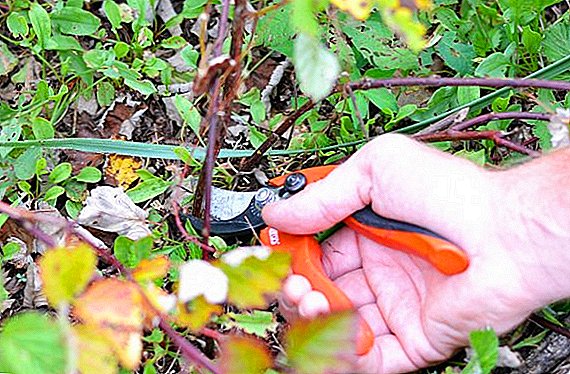 Blackberry is a close relative of raspberry. Therefore, the care of the bushes is carried out on the same principle. Blackberry pruning, like raspberries, is simple, but requires more care. Consider simple techniques for trimming blackberry bushes.
Blackberry is a close relative of raspberry. Therefore, the care of the bushes is carried out on the same principle. Blackberry pruning, like raspberries, is simple, but requires more care. Consider simple techniques for trimming blackberry bushes.
What is needed
Although blackberry is a perennial plant, its branches are biennial. They give fruit for the second year and only one season. It is necessary to cut both old and new branches. The reasons for pruning are as follows:
- after fruiting, the branches become useless. They need to be removed from the bush so that they do not take away the nutrients necessary for the development of the young;
- bushes cut in autumn tolerate frosts better: the sun freely falls in their middle, they are easier to cover for the winter;
- old branches make the bush very thick, which complicates the harvest;
- if they are not removed in the fall, then next season the berries will be small and long ripening;
- shortening young shoots facilitates care, stimulates flowering and increases yield;
- Frozen, weak and insect-infested whips will not yield a crop, they must be removed.

Did you know? The blackberry was depicted on 1964 Soviet postage stamps.
Trimming schemes
All varieties of blackberry are divided into two groups: with upright and with creeping stems. How the stalks are formed depends on how the stems grow.
- Fan method (vertical) suitable for upright grades. Last year's branches are fixed on the trellis vertically, and young twigs, as they grow, are tied horizontally to the lower wires. The plant looks in the form of a fan. Such an arrangement makes it possible in the fall to easily trim old branches in the center at the root. And the young stock is already adapted to bend it close to the ground and to cover it for the winter with agrofibre, plastic bags or straw. In the spring overwintered branches are freed from the shelter. Select the strongest (8-10 pieces), and the rest are completely removed. When the left stems warm up and become flexible, they are fixed vertically.
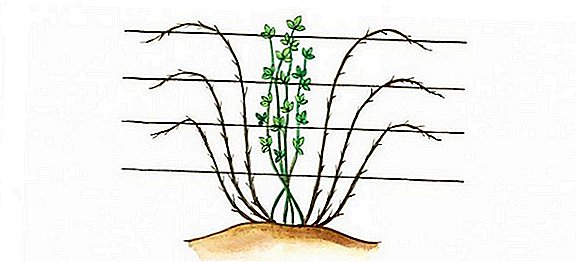
- Rope method (horizontal) applies to creeping varieties. Their branches are very long and flexible. Overwintering branches spiral wound on a wire on one side. They do the same thing with growing up young shoots, only they are tied to it from the other side. In the fall, the otter beetles are completely cut off. The young growth is untied, the best branches are selected, and the weak ones are removed. The remaining whips are neatly placed in the prepared trench and covered with suitable material for wintering. With this formation, neither the length of the lashes nor the spikes are a hindrance.
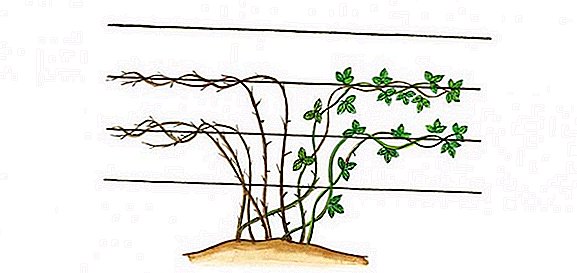
Important! Whatever method is used, it is best to separate young and old branches when forming. It facilitates pruning and care..Blackberry bush develops with a two-year cyclical. Depending on the age of the branches, they cut or pinch their tops.
- In the first yearwhen the young sprout only grows and becomes stronger, at the end of May they cut off its tip by 5-7 cm. This stimulates the growth of lateral processes, on which berries will be tied next year. Some gardeners practice a second nip in the middle of summer, when the stem reaches 0.9-1 m.
- In the second yearafter the buds are in full bloom in early spring, they usually prune the side shoots, shortening them to 40 cm.

Did you know? Superstitious British do not collect and do not eat blackberries after October 11, in order not to be defiled, because they believe that on this day the devil himself spits on this berry.
Trimming time
Pruning is carried out twice a year:
- In the autumn (from the end of August to the end of October, a month before the frost), the stalk-bearing stems are removed, and too long new shoots are shortened to 1.5-2 m.
- In the spring (after the end of night frosts) sanitary pruning is carried out, that is, the removal of frozen lashes and dry tips.
How to make the formation of a bush
It is very important to properly cut blackberry bushes, because the quality and quantity of the crop depends on it. On the other hand, do not be afraid to cut off the extra branches. It is better for a plant to be "liquid" than vice versa. Too thickened bush will give a meager harvest, the berries will be small, and it will be very difficult to collect them.
Learn more about the nuances of blackberry care Chester Thornless, Black Satin, Giant, Ruben, Thornfrey.

In the spring
The spring pruning procedure should be carried out when it is time for frosts, and at night the temperature is above zero. This is done like this:
- bushes are inspected to determine which branches have successfully wintered and which have been frozen. Healthy whip elastic, brown and shiny. Dead branches are black and easily broken;
- those who survived the winter are whipped off with a sharp shear, sick, affected by pests, as well as old shoots left over from the fall. This should be done 1-2 cm below the ground level, leaving no hemp;
- suspicious and doubtful shoots are best cut;
- if the tops have frozen and dried up the tops, they must be cut off;
- the strongest 5-7 pieces are selected from the surviving stems, the rest are removed under the root;
- A crown is formed from the remaining branches, which is tied to a trellis.
Learn how to plant, cut, cure, protect the blackberry from pests.

In the autumn
Autumn pruning prepares plants for winter. It should be started immediately after the end of fruiting:
- those that have just been hatched last year’s stalks are pruned with a secateur under the root, leaving no traces;
- in the same way, low-quality young shoots are removed: thin and small shoots damaged by aphids and other pests;
- 8-10 of the strongest of the healthy young branches are left, given that not everyone will survive the winter. For a healthy normal bush, 5-7 stems are enough;
- abandoned shoots shortened by 1/4. The bush is ready for shelter for the winter;
- Repair grades are much easier to prepare for wintering: all branches are cut below ground level. Cover only need root.
Important! Trimming the stalks, you can not leave hemp: they can settle harmful insects, or they will become a breeding ground for disease.Video: how to trim the blackberry
Learn about bearingless, repair, winter hardy, new varieties of blackberry.As you can see, the process of cutting blackberry is not complicated, but rather time-consuming. By applying the tips described above, you can ease care and increase the yield of your blackberry garden.
How to form a blackberry: reviews


This is me Chester so this year missed. I did not delete the branch at the root, sorry. So little that this branch grew 2cm thick, so on it is another third-level arm with a finger. And considering that the main shoot is 3cm thick ... where can we bend it all together? If I knew that he would continue, almost to the very tip of the tail, to branch out through the leaf ... of course I would have made these shoots at the very beginning. What, in fact, I intend to do in the future. I already wrote that I’m afraid to imagine how I’m going to hang this thick 10 meter sprout on which at least two dozen thick and long branches are hung on the trellis in the spring.





